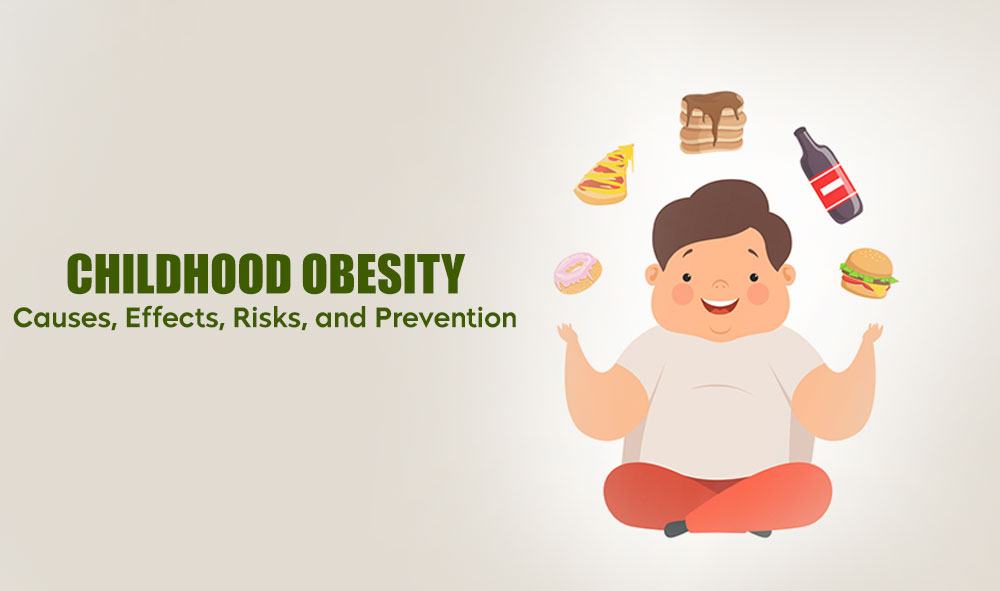Childhood obesity has become a growing concern worldwide, with a significant increase in the number of children affected in recent years. The purpose of this blog post is to provide an in-depth understanding of childhood obesity, its causes, effects, and risks.
Child Obesity Facts
Child obesity is a global epidemic that affects children of all ages, ethnicities, and socioeconomic backgrounds. Here are some of the statistics and figures related to child obesity in India and globally:
- According to the World Health Organization (WHO), the number of overweight and obese children under the age of five has increased from 32 million globally in 1990 to 41 million in 2016.
- In India, the prevalence of overweight and obese children has increased from 9.8% in 2010 to 12.4% in 2017.
- Childhood obesity is defined as having a body mass index (BMI) above the 95th percentile for children of the same age and sex.
Causes of Childhood Obesity:
Childhood obesity is a complex issue that is influenced by a variety of factors. Here are some of the main causes of childhood obesity:
- Genetics: Children with a family history of obesity are more likely to become obese themselves.
- Lifestyle: Lack of physical activity, increased sedentary behavior, and poor sleep patterns are all contributing factors to childhood obesity.
- Environmental Factors: The availability and accessibility of unhealthy food options, such as fast food and sugary drinks, in schools and communities can also contribute to childhood obesity.
- Diet: Poor nutrition and excessive calorie intake can lead to weight gain in children.
Effects of Childhood Obesity
Childhood obesity can have both physical and psychological effects on a child’s health. Here are some of the most common effects of childhood obesity:
- Diabetes: Children who are overweight or obese are at a higher risk of developing type 2 diabetes.
- Hypertension: Childhood obesity can lead to high blood pressure, which can increase the risk of heart disease and stroke later in life.
- Poor self-esteem: Children who are overweight or obese may experience negative self-image, depression, and social isolation.
- Sleep Apnea: Obesity can also cause sleep apnea, which can interfere with sleep and cause fatigue and irritability.
Risks of Childhood Obesity
Childhood obesity can have long-term health risks, and it can increase the risk of developing various diseases and conditions in adulthood. Here are some of the most significant risks of childhood obesity:
- Cardiovascular Disease: Childhood obesity increases the risk of developing heart disease and stroke in adulthood.
- Cancer: Obesity is a known risk factor for several types of cancer, including breast, colon, and kidney cancer.
- Joint Problems: Children who are overweight or obese are more likely to experience joint pain and discomfort.
Overweight vs. Obese
There is a difference between being overweight and being obese. Overweight is defined as having a BMI above the 85th percentile but below the 95th percentile for children of the same age and sex. Obesity is defined as having a BMI above the 95th percentile for children of the same age and sex.
Prevention and Treatment of Childhood Obesity
Preventing and treating childhood obesity requires a multi-faceted approach that involves diet and exercise interventions, behavioral therapy, and family-based interventions. Here are some strategies for preventing and treating childhood obesity:
- Encourage healthy eating habits and regular physical activity.
- Limit the consumption of sugary drinks and high-calorie snacks.
- Involve parents and caregivers in the process to provide support and encouragement.
- Work with healthcare professionals to develop a personalized treatment plan.
Conclusion
Childhood obesity is a serious health issue that requires urgent attention and action. By understanding the causes, effects, and risks of childhood obesity, we can take steps to prevent and treat



